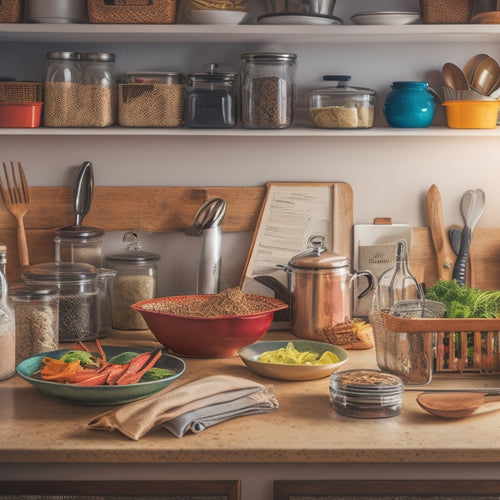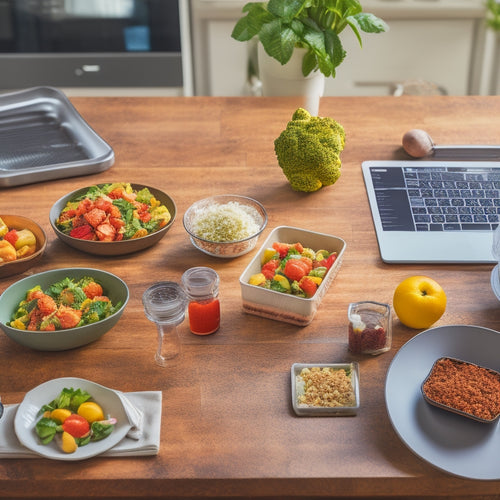Transform Your Kitchen for the New Decade: Comprehensive Guide to Kitchen Renovations
Share
Table of Contents
Introduction
Planning Your Dream Kitchen
Selecting the Perfect Kitchen Style
Choosing the Right Materials
Incorporating Smart Technology
Optimizing Kitchen Storage
Energy Efficiency and Sustainability
Working with Professionals
Conclusion
Introduction
Welcome to our comprehensive guide to kitchen renovations! As we enter a new decade, it's time to transform your kitchen into a functional, stylish, and efficient space that caters to your needs. In this article, we will walk you through the essential steps in planning, designing, and executing your dream kitchen makeover.
Planning Your Dream Kitchen
Set Your Budget and Goals
Begin by establishing your renovation budget and identifying your goals. Determine whether you want a full-scale makeover or minor updates. Consider factors such as functionality, aesthetics, and resale value when setting your objectives.
Assess Your Current Kitchen
Evaluate the strengths and weaknesses of your existing kitchen. Identify areas that need improvement and elements you want to retain. This assessment will guide your renovation decisions and ensure that your new kitchen meets your requirements.
Selecting the Perfect Kitchen Style
Classic Kitchens
Classic kitchens boast timeless elegance, with traditional cabinetry and neutral color palettes. Opt for wooden cabinets, natural stone countertops, and vintage-inspired hardware to achieve this look.
Modern Kitchens
Embrace sleek lines and minimalistic design with a modern kitchen. Choose flat-panel cabinets, stainless steel appliances, and quartz countertops for a sophisticated finish.
Transitional Kitchens
For the best of both worlds, consider a transitional kitchen that blends classic and contemporary elements. Combine shaker-style cabinets with modern fixtures and bold color accents for a unique aesthetic.
Choosing the Right Materials
Countertops
Select from a variety of countertop materials, including granite, quartz, marble, and laminate. Each material offers unique benefits, such as durability, ease of maintenance, and affordability.
Cabinetry
Choose from solid wood, plywood, or engineered wood for your kitchen cabinets. Consider factors such as appearance, durability, and cost when making your selection.
Flooring
Opt for water-resistant and durable flooring materials, such as tile, hardwood, or luxury vinyl. Keep in mind the maintenance requirements and compatibility with your kitchen's overall design.
Incorporating Smart Technology
Smart Appliances
Upgrade your kitchen with cutting-edge appliances that offer advanced features and connectivity. Consider smart refrigerators, ovens, and dishwashers that can be controlled via mobile apps.
Lighting Automation
Enhance your kitchen's ambiance with intelligent lighting systems. Use motion sensors, dimmers, and timers to customize your lighting and save energy.
Optimizing Kitchen Storage
Custom Cabinetry
Maximize your storage capacity with custom cabinets tailored to your specific needs. Incorporate pull-out shelves, drawer dividers, and other organizational features to improve accessibility and organization.
Open Shelving
Open shelves offer a practical and visually appealing storage solution. Display your dishes and glassware while keeping them within easy reach.
Pantry Solutions
Optimize your pantry with adjustable shelving, clear containers, and labels to create an efficient and organized space for your dry goods and non-perishable items.
Energy Efficiency and Sustainability
Energy-Star Appliances
Invest in Energy-Star certified appliances to reduce your energy consumption and lower your utility bills. These appliances meet strict energy efficiency guidelines set by the Environmental Protection Agency (EPA).
Sustainable Materials
Choose eco-friendly materials for your kitchen renovation, such as reclaimed wood, recycled glass, and rapidly renewable resources like bamboo. These materials are not only environmentally responsible but also contribute to a unique and stylish kitchen design.
Water Conservation
Implement water-saving measures by installing low-flow faucets and water-efficient appliances, such as dishwashers and refrigerators with ice makers.
Working with Professionals
Hiring a Kitchen Designer
Collaborate with an experienced kitchen designer to create a cohesive and functional space tailored to your needs. A designer can help you select materials, optimize your layout, and navigate the renovation process.
Partnering with Contractors
Work with a reputable contractor to ensure high-quality workmanship and adherence to project timelines. Verify their credentials, experience, and references before signing a contract.
Conclusion
Transforming your kitchen for the new decade involves meticulous planning, design, and execution. By following our comprehensive guide, you can create a stylish, functional, and efficient space that meets your needs and exceeds your expectations. Embrace the latest trends in kitchen design, incorporate smart technology, and prioritize energy efficiency and sustainability to create the ultimate culinary oasis.
Related Posts
-

7 Essential Tools to Tame Your Kitchen Chaos
You're one step away from transforming your kitchen into a haven of efficiency and calm. Start by decluttering your c...
-

Budget-Friendly Meal Prep Made Easy With Digital Tools
You're just a few clicks away from effortless meal prep that fits your budget. Digital tools like meal prep planners ...

